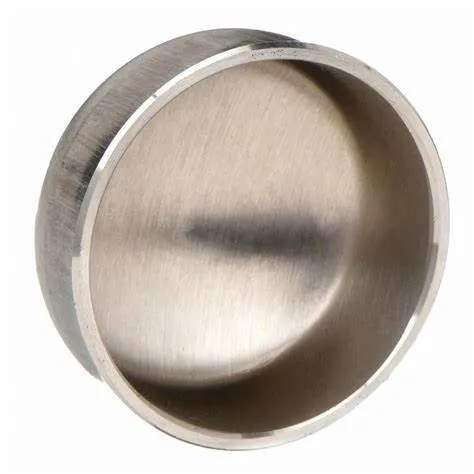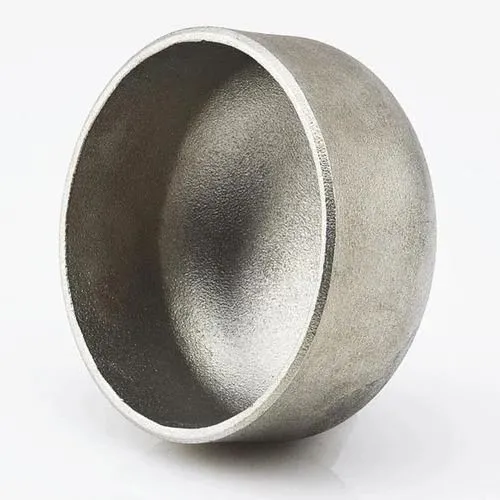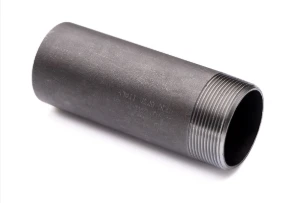JIS B2311 ke Tekanyetso ea Liindasteri ea Majapane e koahelang liphaephe tse cheselletsang butt, ho kenyeletsoa likatiba tse sebelisoang litsing tsa liphaephe. Li-butt-welding caps li sebeletsa morero oa ho koala pheletso ea phala, ho fana ka tiiso ho thibela ho lutla kapa ho silafala. Mona ke kenyelletso ea likatiba tsa li-butt-welding tsa JIS B2311:
- 1. JIS B2311 Standard:
- - Tekanyetso ea JIS B2311 e totobatsa litlhoko tsa moralo, boholo, thepa, tlhahiso, le tlhahlobo ea lisebelisoa tsa ho cheselletsa butt, ho kenyeletsoa le likatiba, lits'ebetsong tsa liphaephe.
- - Tekanyetso e netefatsa hore li-caps tse hlahisoang ho latela maemo a JIS li finyella litekanyetso tsa boleng 'me li lumellana le likarolo tse ling tsa liphaephe.
- 2. Butt-Welding Cap:
- - Sekoahelo sa butt-welding, ho latela JIS B2311, ke se loketseng se etselitsoeng ho koahela le ho koala pheletso ea phala ka mokhoa o sireletsehileng, se fana ka tšireletso le ho boloka botšepehi ba tsamaiso ea liphaephe.
- - Li-caps li sebelisoa maemong ao ho oona ho fela ha pipe e hlokang ho koaloa, ebang ke ka ho sa feleng kapa ka nakoana, ho thibela ho lutla, ho silafala, kapa ho fana ka qetello ea tsamaiso.
- 3. Thepa le Kaho:
- - Likatiba tse tjheseletsang butt tlas'a litlhaloso tsa JIS B2311 li fumaneha ka lisebelisoa tse fapaneng joalo ka tšepe ea khabone, tšepe e sa hloekang, le tšepe ea alloy ho fihlela litlhoko tse fapaneng tsa ts'ebeliso.
- - Likatiba tsena li etsoa ho sebelisoa mekhoa ea kaho e tloaelehileng ho netefatsa khokahano e matla le e sa lutleng ha e cheselitsoe pheletsong ea phala.
- 4. Kopo le Melemo:
- - Li-butt-welding caps li fumana lits'ebetso liindastering tse fapaneng, ho kenyeletsoa oli le khase, lits'ebetso tsa lik'hemik'hale, libaka tsa ho hloekisa metsi, le tse ling moo lipeipi li hlokang ho koalloa ka mokhoa o sireletsehileng.
- - Li-caps li fana ka tšireletso ho liphaephe ho tloha likarolong tsa tikoloho, li thibela tšilafalo, 'me li thusa ho boloka bohloeki le botšepehi ba tsamaiso ea liphaephe.
- 5. Ho kenya le ho Welding:
- - Mekhoa e nepahetseng ea ho kenya, ho kenyeletsa ho lumellana hantle, ho lokisa liphaephe, le mekhoa ea ho cheselletsa, ke tsa bohlokoa ha u kenya li-caps-welding caps ho netefatsa tiiso e tiileng le e sa lutleng.
- - Welding ke mokhoa o tloaelehileng oa ho kenya li-caps ho liphaephe, ho fana ka ho koaloa ho sireletsehileng le ka ho sa feleng ho ka mamellang khatello, ho fapana ha mocheso, le ho phalla ha mokelikeli ka har'a tsamaiso.
- Ka bokhutšoanyane, li-caps tsa JIS B2311 butt-welding caps ke likarolo tsa bohlokoa tse sebelisoang lits'ebetsong tsa liphaephe ho tiisa le ho sireletsa pheletso ea liphaephe ka mokhoa o sireletsehileng. Li-caps tsena li lumellana le litlhoko tse tloaelehileng ho netefatsa boleng, ho tšepahala, le ho lumellana ka har'a likopo tsa indasteri moo ho koaloa ha liphaephe le tšireletso ho hlokahalang.
What Is a Butt Welding Cap and How Is It Used in Industrial Piping?
In industrial piping systems, end-of-line sealing and branch closures require robust solutions. A butt welding cap serves as a critical component for terminating pipes securely. By providing a seamless, welded closure, this fitting maintains system integrity, prevents leaks, and supports compliance with industry standards.
What Is a Butt Welding Cap?
A butt welding cap—also called a pipe end cap or buttweld end cap—is a round fitting designed to close off the end of a pipe. It’s manufactured to match the pipe’s outer diameter and schedule, with either a hemispherical or flat face. To install, both the pipe end and cap are beveled to form a V‑groove, enabling full‑penetration, fusion welds. Common materials include carbon steel, stainless steel, nickel alloys, and other engineered grades, chosen to satisfy pressure, temperature, and corrosion‑resistance requirements.
How Is Butt Welding Cap Used in Industrial Piping?
Butt welding caps find application across oil & gas, petrochemical, power generation, water treatment, and general process industries for both permanent and temporary closures. During hydrostatic testing, technicians install caps to seal off sections of piping while monitoring for leaks. In new construction or retrofit projects, caps terminate branch lines, future tie‑in spools, or dead‑end mains until system expansion. Welders prepare each joint by cleaning and beveling surfaces, aligning the cap precisely, and executing a root pass followed by filler passes per the qualified Welding Procedure Specification (WPS). Post‑weld heat treatment and non‑destructive examination (NDE)—such as radiography or ultrasonic testing—verify weld integrity and compliance with ASME B16.9 and related standards. Additionally, temporary caps enable safe isolation during maintenance, allowing for segment testing and dewatering under regulatory protocols.
Benefits and Best Practices
Butt welding caps offer a smooth‑bore transition that minimizes flow disruption and stress concentration. Their full‑penetration welds deliver exceptional structural strength and leak resistance. To optimize performance, engineers should:
Select caps with matching material grades and wall thicknesses
Adhere to proper bevel angles and joint fit‑up tolerances
Follow qualified WPS protocols rigorously
Consider cladding or protective coatings in corrosive environments to extend service life
Regular inspection and thorough documentation ensure long‑term reliability and safe operation under demanding conditions.
Butt welding caps are indispensable components for achieving durable, leak‑proof pipe terminations in a wide range of industrial applications.
Butt Welding Cap FAQs
What is a butt welding cap?
|
What materials are commonly used?
|
What standards govern butt welding caps?
|
How are butt welding caps installed?
|
Where are butt welding caps typically used?
|
What are the advantages of threaded caps?
|
















